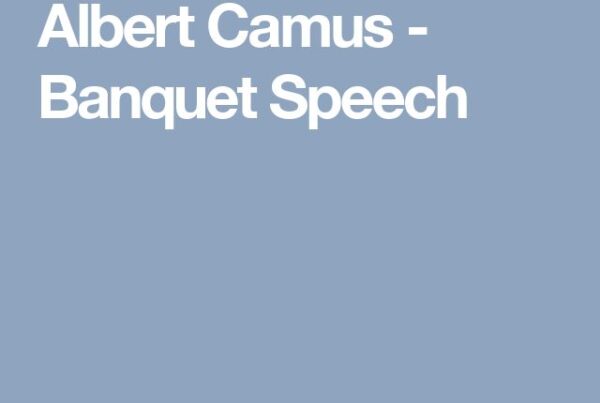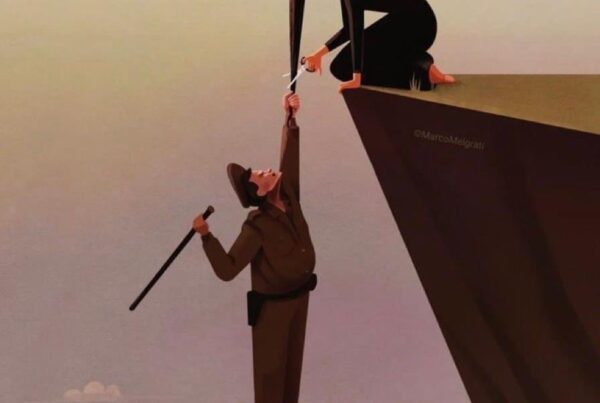 The idea of a retreat gets its meaning from its own end. When the cardinals go to the conclave they have the intention of coming back to the believers with a new message to the world: Habemus Papam. The retreat of the cardinals delivers its secret when the smoke comes out of the chimney. Our meeting in the Klein Engelandhoeve, close to the Belgian town of Turnhout, reminded me of this kind of reunion where serious things are to be discussed.
The idea of a retreat gets its meaning from its own end. When the cardinals go to the conclave they have the intention of coming back to the believers with a new message to the world: Habemus Papam. The retreat of the cardinals delivers its secret when the smoke comes out of the chimney. Our meeting in the Klein Engelandhoeve, close to the Belgian town of Turnhout, reminded me of this kind of reunion where serious things are to be discussed.
”A retreat has a meaning when it leads to a change. The challenge to make a film in spite of the ban places the directors in front of an extreme difficulty. The bigger the challenge, the more they have to be inspired. Because they were pushed out of the world, they could see it better, and because they were not busy anymore with anything else than themselves, they could realise that they were never more willing to live than after having faced death.”
We were six film critics from different parts of the world and we were invited to think about our work, about cinema and culture; the participants came from Chile, Brazil, Turkey, Tunisia, Belgium and the Netherlands. But as film critics don’t have the pretention to deliver such a holy message to the world, we mostly exchanged ideas about our relation to cinema. We also meditated on the current questions related to our work. But we did best when evocating filmmakers whom we love and consider as particularly inspiring. As for me, I felt inspired in this very special retreat by two outstanding contemporary filmmakers: Kim Ki-duk from South Korea and Jafar Panahi from Iran.
One would say that there are obviously more differences between these two men than things they could have in common. I particularly think of two films made in the same year 2011 (as if by chance): Arirang by the South Korean filmmaker and This Is Not a Film by his Iranian colleague. Let’s put aside from the start all kinds of passions like anger, frustration and challenge which the two directors legitimately show in their works. What I would like to stress here, is that the situation of the two filmmakers in their films follows the scheme of retreat in its very elementary meaning: to move out of the world when its meaning is lost, in order to come back with a new one. And this is what happened to Kim Ki-duk and Jafar Panahi.
The first component of the retreat is the conclave. Both directors are alone. Kim Ki-duk seems to have deliberately chosen for exile by leaving the city and staying alone in a kind of camping in solo. Jafar Panahi is in house arrest and thus forced to stay at home. In fact both are forced into exile. The first by a film industry where there is no room for him despite all his great multiple successes. The second is also not able to make films, for political reasons. Both are confronted, whatever the reason, with the loss of what is essential to their existence: the making of films. After reaching the bottom of desperation, they emerge in such a mystic elevation that they fuse with being in its whole. They were forced to leave the world, but the world came to them.
What is not allowed within the world of men becomes possible outside of it. The two directors are forced to escape the wide existence and reinvent the world in the small space that they can have. What is cinema if not a way to reorganize space? The smaller the space, the more inspiring. It’s like energy which is more concentrated in a small area. Kim Ki-duk and Jafar Panahi are not only constrained to isolation, but each of them looks even for a smaller location. In the little house where he is staying, the South Korean installs a tent. Inside the tent he settles a sleeping bag like a cocoon where life is starting again. In his apartment in Teheran, Jafar Panahi draws the set for his new film on the floor. The set is nothing else but a drawing of a virtual house.
By doing so, it seems that the genius is putting concepts upside down. The big and open space is not necessarily the one where others are deciding what is possible and what’s not. The dialectic of big/small, free/prisoner, open/close and hence allowed/forbidden doesn’t have any meaning out of the world as it is run by money and politics. Once out of it, the body of the artist is jailed but his genius is freed. It doesn’t suffer the weight of daily life where details obstruct his view. On the contrary, the isolation liberates the thought from anything else than itself and the subject sees the world in its whole. Details get a new dimension, a new significance. The proximity of a plate of noodles, a stockfish, an iguana, etc. is seen as a fusion with the being. There is a clear parallel between a bit of snow melting in a pot and the body of Kim whose skin is crannied. From his balcony Panahi projects himself in the fire burning here and there in Teheran.
The second component of the retreat is reflection in both its meanings: the first is the act of thinking; the second is the mirroring effect of an image. When a man is cut off from normal life, he has more time to think. In such a situation the main object of thinking is the self. Michel de Montaigne, the 16th century French philosopher, is a typical example of the idea of retreat from that point of view. He made the choice to isolate himself in the tower of his chateau to write The Essays, one of the canons of humanist philosophy. When he is alone, the philosopher can only be busy with his thoughts. He questions himself about his own concepts.
Like Montaigne, Kim Ki-duk and Jafar Panahi have a reflexive state of mind in its double meaning. They try to think about themselves while they are thinking. Because their way of thinking is not possible out of cinema, they do think in images and create a world bound with images. Kim Ki-duk in his exile has two activities: eat and watch his own films. At the same time he makes a film of himself watching. In his apartment, Panahi is also making a film about himself, with the help of his friend Mojtaba Mirtahmasb. When the latter goes away, he leaves the camera and Panahi films himself. The isolation is seen from the external world as a limitation and exclusion but from the point of view of the artists it is more liberating for their thoughts, because then they are only busy with themselves.
In the retreat there is a reflection on the meaning of existence and the best way to represent it. The cardinals in the conclave think about the best way to keep the power of religion over society. Therefore it has to be represented by the most adequate person/icon. Panahi en Ki-duk are looking for the best way to present themselves to the world, which is a film in which they don’t talk about themselves as personae but as image makers. From that point of view they are questioning the meaning of their work.
The last component of the retreat is to come back to the world with a new meaning. The conclave of the cardinals ends with the election of the new holiness. In this sense there is a reproduction of the prophetic process. The prophet gets his message after a retreat from the world. Very often it happens in the desert or in the mountains. The prophet meets the truth which is delivered as a voice, a light or the face of God himself, and then he comes back to tell humanity about it. A prophet gets the message of God; the artist gets inspired by an encounter, a vision or a voice.
Kim Ki-duk and Jafar Panahi both imagine this moment of the advent of truth. Many times, the South Korean hears someone knocking at the door. He goes out but finds no one and nothing there. This is precisely the moment when he changes and shows signs of an illumination. The Iranian also has an encounter with a kind of presence. A young student who comes to collect the garbage recalls how the director always got inspired in his work: by the little people. The South Korean gets the inspiration to fabricate a pistol; the Iranian discovers that his cinema is possible even in his situation. Both discover that they don’t need to wait for the world to let them make films, but that they have to grab any possibility to do so. They reverse the relation they have to the system which is trying to crush them. The instinct to survive provides them with such a force that they turn the external energy against itself.
From that point of view we get to see two kinds of answers to the experienced injustice in terms of cinema: Kim Ki-duk has a cruel and mystic answer and he gives it in the form of an ironic parody of a thriller. As he was always used to depict the raw and harsh reality is his films, he makes a pistol, returns to the city like a soldier of justice and kills the producers who didn’t want to finance his films. Panahi makes a show of his typical cinema based on mere observation of the simple facts of his society. The telephone conversations he is having from time to time are used as a link to the external world. He builds a whole story around the young student who visited him in such a way that it becomes a statement about the dysfunction of Iranian society. In his retreat, the artist gets extremely lucid about himself and about his relation to the world. He proceeds to a reorganisation of the world like in a film where he has all the power.
A retreat has a meaning when it leads to a change. The challenge to make a film in spite of the ban places the directors in front of an extreme difficulty. The bigger the challenge, the more they have to be inspired. Because they were pushed out of the world, they could see it better, and because they were not busy anymore with anything else than themselves, they could realise that they were never more willing to live than after having faced death. Kim Ki-duk and Jafar Panahi were supposed not to make any more films and to stay only as nice memories of film history. They both decided that it is not yet time to die and they reappeared like a Sphinx reborn from its own ashes.
In a word, these two filmmakers give us a lesson not only in cinema, but in surviving mediocrity in general. This applies also for film criticism. In a time where there is less and less space for criticism, we need to be more inventive of new forms and ways to resist the levelling down. The Slow Criticism Retreat is one of these battles against the hegemony of the consensus. Thanks to directors like Kim Ki-duk and Jafar Panahi we know that there is always a way not to give up.


